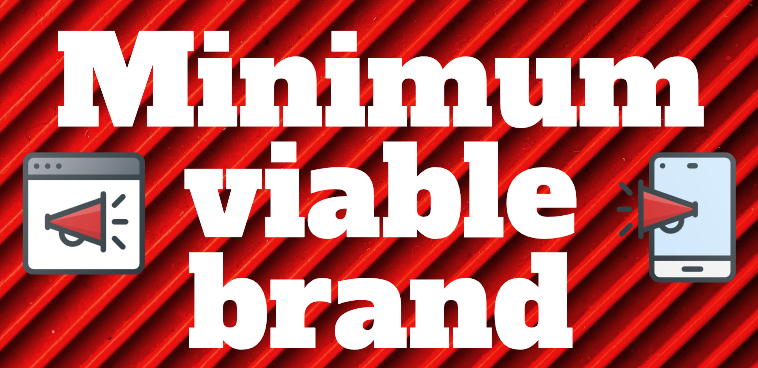Eager entrepreneurs often overlook the importance of brand strategy as the foundation for a successful startup. They’re tempted to get their new product into the market as soon as possible, and give little consideration to how to ensure people perceive it as different and valuable.
Launches should be grounded in a brand foundation while being pursued with agility and speed. Just as tech start-ups employ the minimum viable product concept, made popular by Eric Ries in “The Lean Startup,” to test product hypotheses with minimal resources, entrepreneurs can use a minimum viable brand to ensure those hypotheses are grounded in strategic intent and market insights.
A MVB is an alternative to a complete, robust brand platform. It is composed of the six core elements of a brand that are necessary to ensure internal focus and alignment as well as external relevance and differentiation:
- What we stand for — our purpose or essence
- What we believe in — our defining values
- What people we seek to engage — our core target(s)
- What we offer — the overarching experience we provide
- What distinguishes us — our key differentiators
- What we say and show — our logo, look, and lines (messaging)
Learn more about the MVB in this video.
To learn more from Denise Lee Yohn or to book her to speak to your organization, see her website and YouTube channel.
If you enjoy this article, sign up for Business Transformation SmartBrief and ANA Brand Activation SmartBrief, among SmartBrief’s more than 200 industry-focused newsletters.
Transcript
It may seem like all you need to start up a business is a great product, but with so many other choices out there, you need to ensure your offering is positioned so that its differentiation and value is clear to customers. A brand strategy can help you do that. It can also help align and focus your internal team so that everything everyone does contributes to a powerful market position.
You may not need or want to develop a complete brand platform at this point, but you can establish a good foundation with a minimum viable brand (MVB). You might be familiar with the minimum viable product concept, which involves getting into market with a product prototype as quickly as possible to test hypotheses and get customer feedback while spending minimal resources.
A minimum viable brand provides the same type of opportunity to test and learn. It puts the pieces of your brand in place that provide brand clarity and focus — and leaves the rest of your brand elements until after you’re in the market for awhile and have the resources, feedback and market insights to inform them.
A MVB is comprised of six parts — six questions that start with “what.”
The first one has to do with what you stand for. You and your company need to be guided by something more than your product strategy or business goals. You should articulate a purpose, mission, or ideal that explains why you exist or the essence of what you hope to contribute to the world.
The second “what” is what you believe — the values that prescribe the mindset and behaviors expected from everyone who works on your business. Identify three to five clear, unique principles or priorities that explain to customers as well as employees the way you as a company do things.
The third dimension of an MVB is what people you want to engage — your core target. If you try to appeal to everybody, you’ll end up appealing to nobody, so you need to specify the primary group of people you want as customers. And remember: The purpose of an MVB is to test your ideas, so it’s OK if it turns out that need to change your target later.
What you offer is the next “what.” You should describe your offering in terms of the overarching experience you provide. Don’t limit this to a product description, like “we make a mobile app.” Think about what your product enables your customers to do and how you want them to feel when they use it. A mobile app may give people the freedom to do tasks when they’re away from their desks or it may help them discover and enjoy new businesses.
No. 5 of the six “whats” in your MVB is what makes you different. This may be closely tied to the other brand elements that we’ve just discussed, but you need to be explicitly clear about what is different and better about you compared to your target’s other options.
The last “what” is what you say and show — that is, your name and logo, look and feel, and key messaging. You should determine how you will express in a few initial words and images the other parts of your MVB.
So those are the six whats – the minimum viable brand — that you should carefully identify and clearly articulate before you launch anything. And then you should use it is a guide as you go to market.
Given the pace of business today, you should expect to refine your offerings iteratively or have to reset or pivot as your make mistakes and learn along the way. But being agile and responsive doesn’t mean you have to take a ready-fire-aim approach when it comes to brand strategy. An MVB provides the right balance of structure and flexibility.
